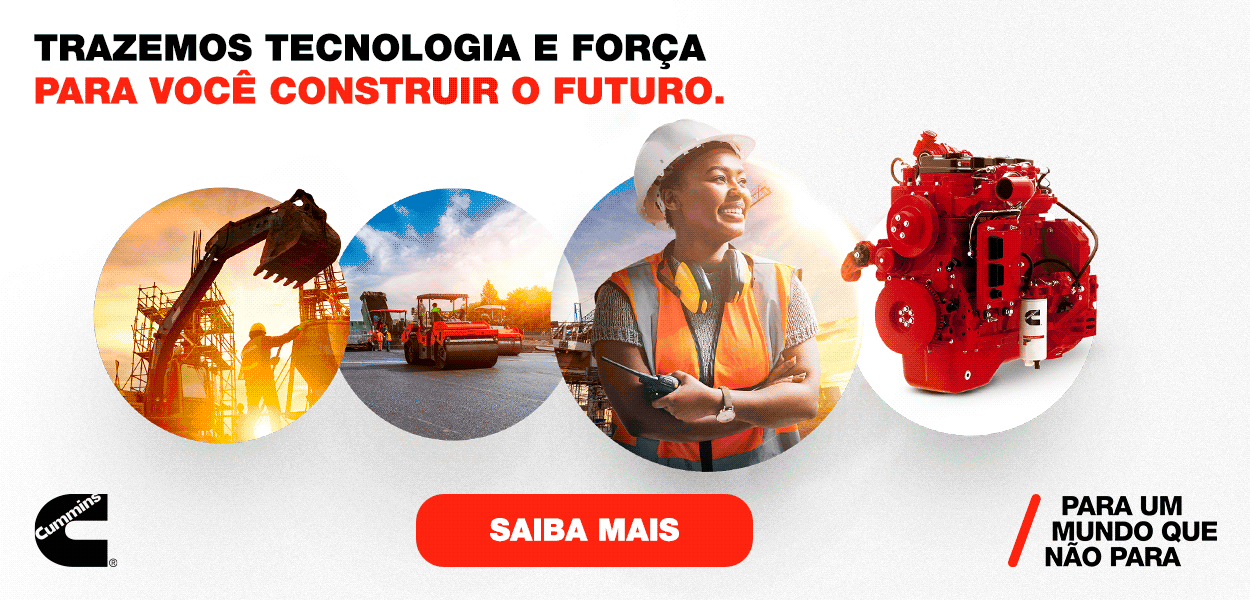Complying with the job
Is there any sense in comparing compact loaders with skid-steer loaders? To answer this question that may be economically significant to you, we heard some experts of the industry
At the first sight, names may even suggest that skid-steer loaders (called mini-loaders in Brazil) and compact loaders are different just in general features such as size and load capacity. But their names may cause some confusion. After all, they are families of equipment with quite different concept and engineering. Therefore each of them fit better to some applications and the selection has to be carried out carefully, considering factors such as services to be developed with the machine and maneuvering spaces of the environments where they will be used. Spaces will include, for example, floor evaluation, limitations of height and distances to be traveled in working cycles, among other variables.
Even not being so spread as they could be, skid-steer loaders are quite known in Brazil, where they are available in a wide range of models. When compared to compact loaders, they have smaller dimensions (width and height) and, due to the possibility of turning their wheels in opposite directions, they may turn on their own axis. This is exactly what makes them more suitable to work in places where the access of larger equipment is more difficult or in areas where the space available for maneuvering is reduced. This is quite significant.
Although they are more used in loading and transportation, it is in the item versatility that skid-steer loaders propose to overcome compact loaders. In the same way of backhoes, they are also frequently compared to “tool boxes” or “ Swiss penknives” since they may receive buckets and many other attachments such as forks for pallets, trenchers, brooms, asphalt milling machines, hammers, drilling machines and concrete mixers.
Another vocation of these machines is the agribusiness. Since its origin in the 50s, when the first unit was produced in the USA by Melroe, the brand Bobcat (one of the main brands of the area) was initially designed for working in a turkey-raising farm. These machines are used in the agribusiness until now and—even in Brazil—they are relatively common in environments similar to those where they were born, mainly but not only in poultry raising farms. “Its use was expanded quickly to construction, that is currently its main market in Brazil”, says Pedro Medeiros, Bobcat manager for the Brazilian market.
But there is a counter point. As emphasized by the professional of Bobcat—brand controlled by Doosan—skid-steer machines compete with compact loaders in some applications, especially those most restricted to loading and transportation. “But advantages such as fuel consumption, variety of applications, ease of transportation and maintenance value also direct clients to prefer skid-steer loaders”, points Medeiros.
The product marketing expert from New Holland Construction, Rafael Ricciardi, observes that skid-steer loaders may be transported even by pick-ups due to their more compact layout. “In some countries they have almost domestic use in small farms or country houses”, says him. “Skid-steer loaders may receive more than 100 attachments, are really quite versatile and cost half of the cost of a compact loader”, ends Ricciardi.
MORE LOAD?
At the end, there is no direct competition. More recent in the Brazilian market, compact loaders still are not composing a formal category of products in the country. That is why a manufacturer as JCB, for example, prefers to follow the classification proposed by Abimaq (Brazilian Association of Machine and Equipment Industry), that qualifies loaders as those with bucket capacity above 1.7 cu.mt. Therefore, all models with capacity below this figure are “compact loaders”.
There are other points of view. For Ricardo Nery, product manager from JCB, compact loaders are solutions to be used in places where “there is a higher demand for loading capacity”, terrains are extremely irregular and there is more space for maneuvering (while skid-steer machines have ‘unique maneuverability’ and lower dimensions).
In addition, since they have central pivot they are used mainly for loading and handling materials in yards and open places, where larger loaders and even backhoes are used in general. “Since compact loaders share some features of these machines, such as weight and power, they have a lower demand in Brazil”, says the expert.
But there are other points that demand some attention. While wheels of skid-steer loaders are hydrostatically powered—using a lower-consumption diesel engine to power hydraulic pumps that activate motors and wheels—compact loaders are mechanically powered. This means that they transport more load at a higher speed than skid-steer loaders. In other words, differences may be significant in the load capacity and in the travelling speed. These are points to be considered. But it is obvious that—talking about applied technology—it is always a question of complying with the job, what has to be studied for each case.

Av. Francisco Matarazzo, 404 Cj. 701/703 Água Branca - CEP 05001-000 São Paulo/SP
Telefone (11) 3662-4159
© Sobratema. A reprodução do conteúdo total ou parcial é autorizada, desde que citada a fonte. Política de privacidade














